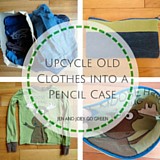Over the last week I have been interviewing candidates from the NDP, Liberal and Green Parties. I reached out to the PC Party as well but did not hear back from any of the candidates. The last question I asked each of them was about how they have reduced the environmental impact of their election campaign. Here are their responses....some are very interesting.
We car pool whenever possible and I’ve recently bought a very small car with excellent gas mileage. We reuse our signs, wires and posts. Rather than send out a mailing, much of which may be tossed out with junk mail, we are hand delivering our brochure to the urban parts of Dufferin-Caledon. We are relying on newspaper ads to a greater degree and less on printed material.
All of the platforms are printed on FSC paper and Steve rides his bike whenever he can. When picking lawn signs Steve went with the option that can be washed and then reused for the next election. They track where all the signs are located so they can easily pick them up after the election. Oh and check out Steve's website. Go to it and then don't do anything, go away from it for a bit (like go into Paint and draw a picture of a unicorn and 3 puppies). When you come back see what has happened to his website. Pretty cool eh?
When I asked Nik this question I got a very raw and real answer from him. Honestly it was not at all what I was expecting but I find it refreshing that he answered the question truthfully. Here are the best parts of his answer:
'I must admit that campaigns are really very terrible on the environmental side. There's a lot of driving around, constantly, sometimes just to deliver a handful of election signs in an expedient manner a half hour's drive away. We try to carpool, but it's incredibly difficult due to multiple schedules being balanced- and there's virtually no viable, reliable, efficient transit to take internally within the riding. Constant driving to events, to canvassing in different parts of the riding; thousands of leaflets which will probably be trashed instead of recycled by innumerable constituents; and, although we'll pick most of them up- those campaign signs are visual pollution for about a month. I consider myself an environmentalist, but really, again, it's very difficult to be competitive without a large footprint- in life and in campaigning. The current economic and social-success model our society is based upon still rewards bad behavior and punishes good behavior (both in environmental and social justice issues), and that's one of the reasons that I'm running in the first place. A catch-22 perhaps?
Or maybe that's just a terrible excuse. I'm not sure- but it reminds me of one of George Monbiot's running themes dealing with competing moralities in this new post-climate-change world. Apparently Jack Layton never owned a car, but he was pretty successful in the political world, don't ya think? I guess I'm going to spend the rest of my life trying to catch up to him.'
I’ve been running a 21st century campaign that’s essentially paper-free. Focusing on the power of social media, I’ve been making videos and spreading my campaign messages via Twitter and Facebook. Just like I did with my Love Song For Elizabeth May which got extensive media coverage during the Federal Election, I aim to get important environmental and societal messages out to as many people as possible by being entertaining and interesting. Any flyer's I’ve brought to meetings were generic party flyer's that the main campaign office had left over. I’ve been distributing generic signs that were left over and which can be reused. I had a flyer-making event where we made flyer's out of discarded cereal boxes, and we’ll encourage people to recycle these recycled flyers when the campaign is over.
I practice what I preach. As an example, I bring my own stainless steel water bottle (filled from the tap) rather than using plastic water bottles provided at all candidate meetings. I also support the ban of election signs on public property in Caledon...it is important to be able to have some election signs so people are aware of the candidates but there can be far too many signs. I print my speeches and notes on scrap paper or I print double-sided.
The Ken Schmidt campaign team is taking a concerted effort to ensure every aspect of the local campaign contributes to reducing the environmental impact. Where at all possible the campaign is utilizing social media advertising to reduce the printed material. All in office collateral, cans and plastics are recycled. We are utilizing car-pooling during canvassing to reduce the carbon foot print whenever possible.







Great to see everyone doing their part in their own way. :) Oh, and since that interview, you can add my fun musical digital flyer to my list. I posted online this week and people have been sharing it in order to save trees: http://bit.ly/DigitalFlyer
ReplyDeleteIt even got written up in The Toronto Star and Metro. So people appreciate green efforts. :)
Josh your videos are awesome!!! We having been watching them in the office!
ReplyDeleteI love Nik's response too. He was very honest and open. God for you, Jen for asking the question!! :) let me know who wins!!
ReplyDeleteThe Liberals won overall so they are back in power for a 3rd term. My riding switched from Liberal to Conservative. ::sadpanda::
ReplyDeleteThis is so interesting. I had never thought about the environmental impact of a campaign before, beyond the flights and bus/car rides to events. Thanks!
ReplyDelete@Jessica - there really can be a massive impact. Especially for the candidates that have larger geography to cover.
ReplyDelete